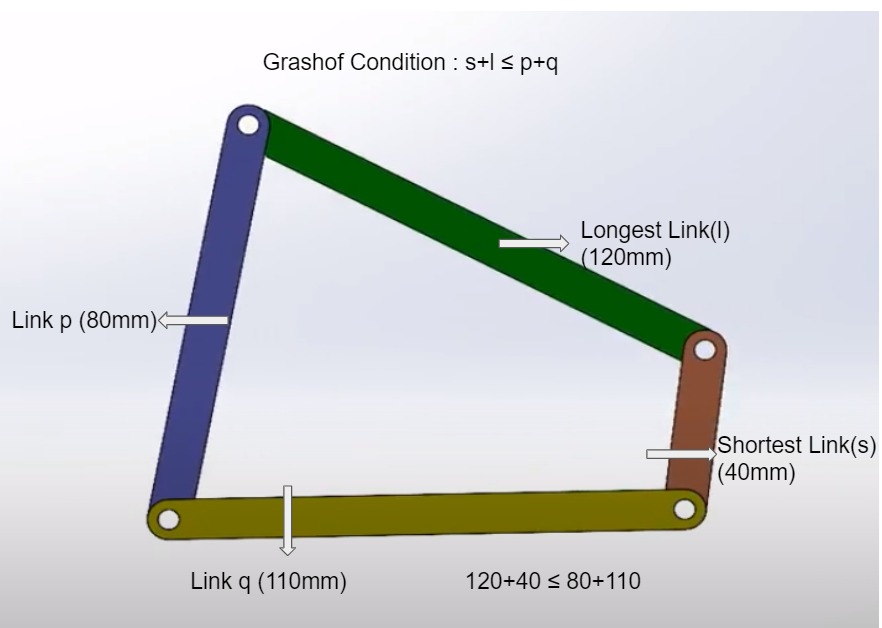Theory
This is a basic mechanism .Four bar mechanism is constructed from four links, which are connected in a loop through revolute joints. In this mechanism one link is fixed and the other three move. In order to have proper motion the grashof's law should be satisfied, which is S + L ≤ P+Q The Grashof condition for a four-bar linkage states: If the sum of the shortest and longest link of a planar quadrilateral linkage is less than or equal to the sum of the remaining two links, then the shortest link can rotate fully with respect to a neighboring link.
Inversions of Four Bar Mechanism
1) Crank and Rocker Mechanism : Smallest link can Rotate full 360 rotation. In this mechanism the link adjacent to the smallest link is fixed.
2) Crank and Crank : In this mechanism the smallest link is fixed and the links adjacent to the smallest link can rotate full 360 rotations.
3) Rocker Rocker Mechanism : In this mechanism the link opposite to the smallest link is fixed. The links adjacent to the smallest link do not rotate full 360 degree rotation. But the smallest link can rotate full 360 degree rotation.

Application of four bar mechanisms
1) In Pumpjack : In areas where underground oil is not under enough pressure to drive it all the way to the surface, it is necessary for oil wells to actively pump up the oil. One standard method for achieving this is to use a reciprocating piston that pumps the oil up the shaft. A pumpjack is a drive mechanism to achieve this, consisting of a four-bar linkage.
2) Bicycle pedaling : Bicycles are an efficient means of human-powered transportation due to their use of rotary wheel motion. Humans cannot directly produce indefinite rotations, however, so some mechanism is required to translate reciprocating human motion into rotary motion. Bicycles achieve this conversion with two four-bar linkages, each consisting of the two segments of the rider's leg, the bicycle frame, and the crank.
3) Knee joint : The human knee joint is a type of biological hinge, which allows movement in only one primary angle. The knee connects the femur (the upper leg bone) to the tibia (the larger of the two lower leg bones). These two bones sit next to each other and are free to rotate about a single axis. A mechanism is needed to keep the two legs bones attached to each other, while still allowing rotation. In the case of the human knee this is achieved with a four-bar linkage consisting of the two bones together with the anterior cruciate ligament (ACL) and posterior cruciate ligament (PCL),